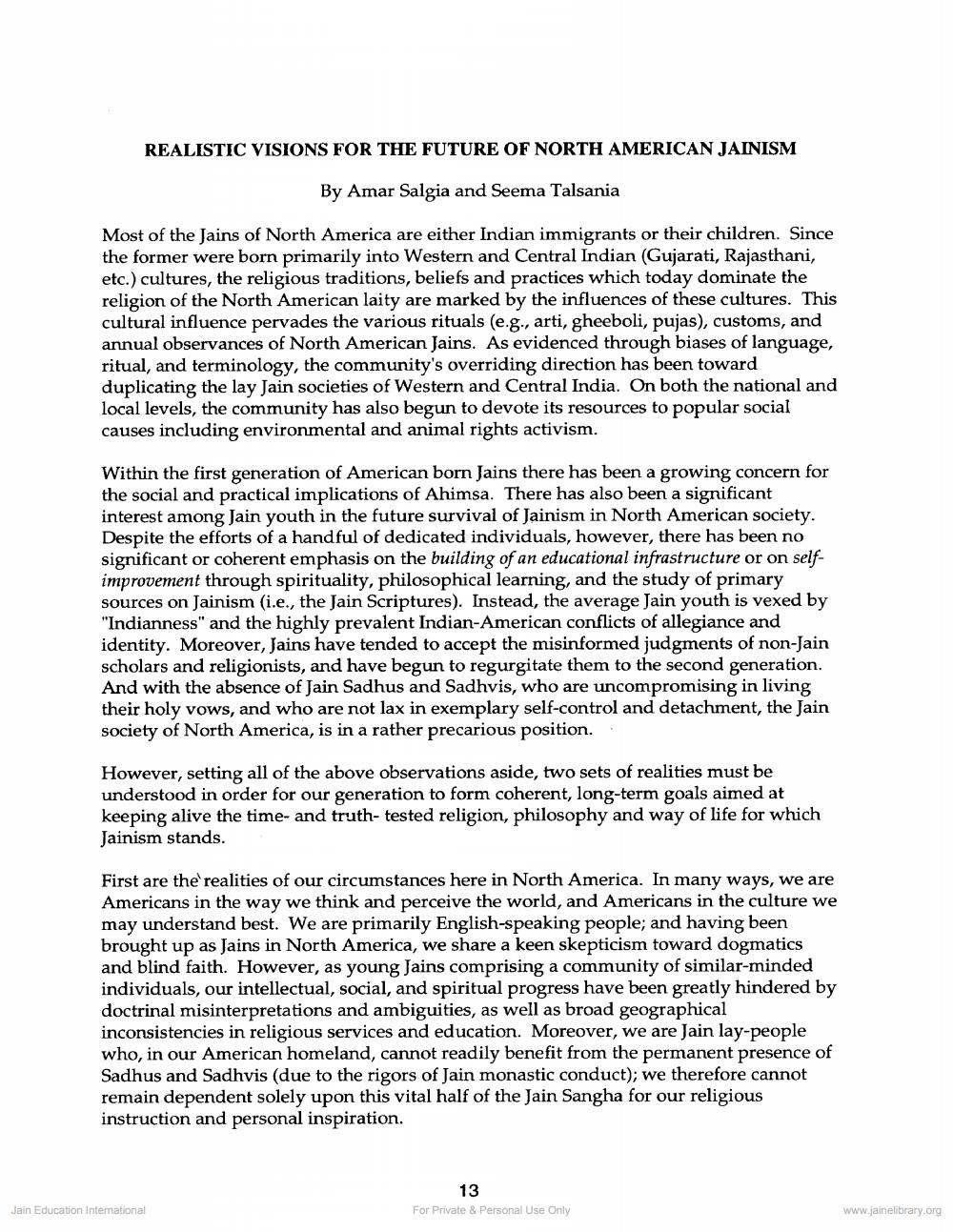________________
REALISTIC VISIONS FOR THE FUTURE OF NORTH AMERICAN JAINISM
By Amar Salgia and Seema Talsania
Most of the Jains of North America are either Indian immigrants or their children. Since the former were born primarily into Western and Central Indian (Gujarati, Rajasthani, etc.) cultures, the religious traditions, beliefs and practices which today dominate the religion of the North American laity are marked by the influences of these cultures. This cultural influence pervades the various rituals (e.g., arti, gheeboli, pujas), customs, and annual observances of North American Jains. As evidenced through biases of language, ritual, and terminology, the community's overriding direction has been toward duplicating the lay Jain societies of Western and Central India. On both the national and local levels, the community has also begun to devote its resources to popular social causes including environmental and animal rights activism.
Within the first generation of American born Jains there has been a growing concern for the social and practical implications of Ahimsa. There has also been a significant interest among Jain youth in the future survival of Jainism in North American society. Despite the efforts of a handful of dedicated individuals, however, there has been no significant or coherent emphasis on the building of an educational infrastructure or on selfimprovement through spirituality, philosophical learning, and the study of primary sources on Jainism (i.e., the Jain Scriptures). Instead, the average Jain youth is vexed by "Indianness" and the highly prevalent Indian-American conflicts of allegiance and identity. Moreover, Jains have tended to accept the misinformed judgments of non-Jain scholars and religionists, and have begun to regurgitate them to the second generation. And with the absence of Jain Sadhus and Sadhvis, who are uncompromising in living their holy vows, and who are not lax in exemplary self-control and detachment, the Jain society of North America, is in a rather precarious position.
However, setting all of the above observations aside, two sets of realities must be understood in order for our generation to form coherent, long-term goals aimed at keeping alive the time- and truth- tested religion, philosophy and way of life for which Jainism stands.
First are the realities of our circumstances here in North America. In many ways, we are Americans in the way we think and perceive the world, and Americans in the culture we may understand best. We are primarily English-speaking people; and having been brought up as Jains in North America, we share a keen skepticism toward dogmatics and blind faith. However, as young Jains comprising a community of similar-minded individuals, our intellectual, social, and spiritual progress have been greatly hindered by doctrinal misinterpretations and ambiguities, as well as broad geographical inconsistencies in religious services and education. Moreover, we are Jain lay-people who, in our American homeland, cannot readily benefit from the permanent presence of Sadhus and Sadhvis (due to the rigors of Jain monastic conduct); we therefore cannot remain dependent solely upon this vital half of the Jain Sangha for our religious instruction and personal inspiration.
13 For Private & Personal Use Only
Jain Education International
www.jainelibrary.org




